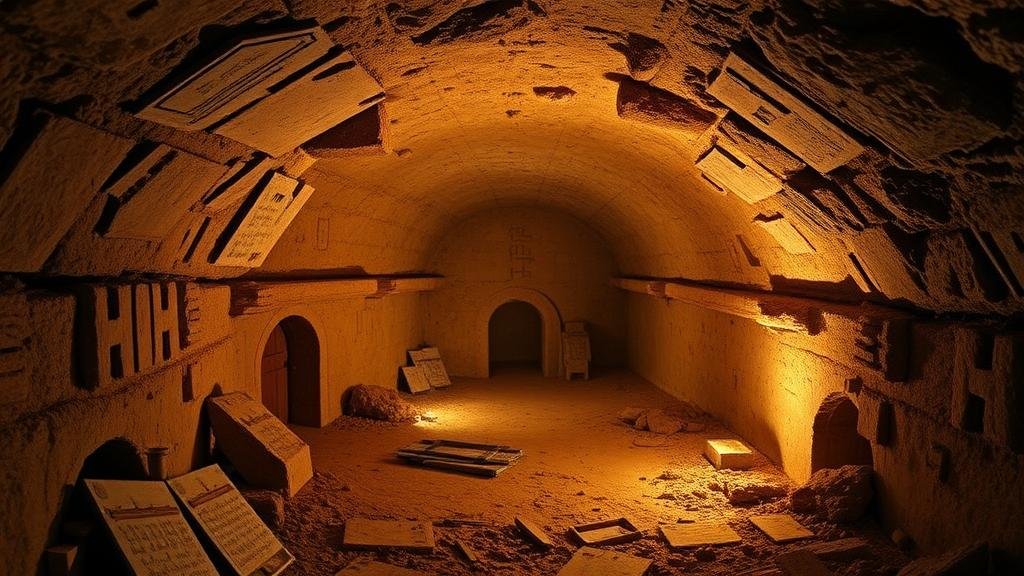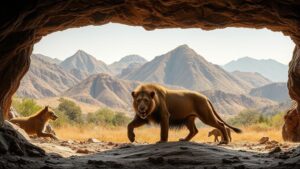Research techniques that link ancient tunnel systems to hidden treasures.
Research Techniques That Link Ancient Tunnel Systems to Hidden Treasures
Throughout history, legends of hidden treasures have captivated the human imagination. From the El Dorado of South America to the treasures of King Solomon, tales abound of wealth concealed in ancient tunnel systems. This article explores the research techniques that have been applied to uncover the links between these tunnel systems and their associated treasures, focusing on archaeological methods, historical documentation, and modern technology.
Understanding Ancient Tunnel Systems
Ancient tunnel systems, such as the famous Catacombs of Paris and the extensive underground structures in Cappadocia, Turkey, have served various purposes, including burial, defense, and shelter. Many of these tunnels were also believed to be used as secret routes for transporting precious items, evading enemies, or hiding valuables from invading forces.
1. Archaeological Excavation
Archaeological excavation is the most direct research technique used to explore ancient tunnels. Archaeologists systematically dig through layers of soil and debris to uncover artifacts and structures that can provide clues about past civilizations.
- For example, in 2012, archaeological teams in Jerusalem discovered a series of tunnels dating back to the Second Temple period (516 BCE – 70 CE), which led them to significant findings, including ancient coins and pottery that suggested the existence of a hidden treasure.
- In Egypt, extensive excavations at the Pyramids of Giza have uncovered not only burial chambers but also a network of tunnels that may have been used to transport treasures to the burial sites of pharaohs.
2. Historical Documentation
Old maps, manuscripts, and chronicles are invaluable resources for linking ancient tunnels to hidden treasures. Historical documents often contain accounts of treasure locations or descriptions of tunnel networks used by historical figures.
- An example can be found in the writings of Italian explorer Giovanni Borgia, who noted details of hidden treasures linked to the extensive Roman aqueduct systems.
- Similarly, Spanish colonial records from the 16th century document stories about treasure hidden by the Inca in concealed underground passages in Peru.
3. Ground Penetrating Radar (GPR)
Modern technologies such as Ground Penetrating Radar (GPR) have transformed how researchers study ancient tunnel systems. GPR uses radar pulses to image the subsurface and can detect anomalies that suggest buried objects or voids.
- In 2020, GPR surveys were used in the ancient city of Petra, Jordan, to identify a network of hidden tunnels and chambers that had previously been unnoticed, further indicating the potential for undiscovered treasure.
- Similarly, researchers in Italy employed GPR to locate lost Roman villas, which led to the discovery of artifacts thought to have been hidden within their complex tunnel systems.
4. Remote Sensing Technology
Remote sensing technology, including satellite imagery and aerial photography, offers a broader perspective for identifying ancient sites. This technique allows researchers to uncover disturbances or patterns in the landscape that indicate tunnel systems.
- The use of satellite imagery in the Amazon rainforest has revealed geometric shapes below the foliage that suggest the presence of advanced ancient civilizations and their potential hidden treasures.
- Aerial photography in Southern Italy led to the discovery of ancient Etruscan tombs and connected tunnel networks, indicating routes that could have been used to hide or transport treasures.
Challenges and Considerations
While these research techniques have proven effective, several challenges persist. Environmental conditions, such as erosion or natural disasters, can obscure or destroy ancient sites. Also, the legality of excavation and respect for local cultures must be prioritized, as many hidden treasures may hold sacred significance for the descendants of ancient civilizations.
Real-World Applications
The techniques discussed applied not only in archaeological contexts but also in preservation efforts and treasure-hunting expeditions. For example:
- In the pursuit of the legendary treasure of the Flor de la Mar, lost in the Straits of Malacca in 1511, researchers are using old maritime records alongside GPR to locate potential underwater tunnels.
- In China, excavations of the Ming Dynasty’s defensive tunnel systems are revealing not just military strategies but also hidden artifacts and treasures from that era.
Actionable Takeaways
For enthusiasts and researchers interested in the links between ancient tunnels and hidden treasures, the following steps can be taken:
- Conduct thorough research using historical documents and maps to identify potential sites of interest.
- Use modern technology, such as GPR, in exploratory efforts to detect possible underground features.
- Engage with local communities and respect cultural heritage while pursuing archaeological endeavors.
By combining traditional archaeological methods with modern technology, researchers continue to unlock the mysteries of ancient tunnels and their associated treasures, ensuring that the stories of the past may guide us toward discoveries of invaluable historical significance.



